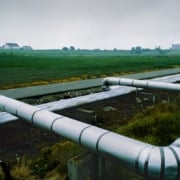White House Releases Plan to Advance Nuclear Reactor Technologies
On May 29, 2024, the Biden administration announced the creation of a Nuclear Power Project Management and Delivery working group (Working Group), which is intended to accelerate the deployment of cost-effective nuclear reactor technology. The Working Group will include members of the White House and the U.S. Department of Energy (DOE) as well as other stakeholders, including project developers, engineering, procurement, and construction firms, utilities, investors, labor organizations, academics, and nongovernmental organizations.
This step, in combination with others including those discussed below, reflect an effort by the administration to “re-establish U.S. leadership” in the nuclear power industry and encourage innovation. These efforts include both investments in traditional nuclear infrastructure (e.g., Georgia Power’s Vogtle Plant in Waynesboro, Georgia (Vogtle Power Plant)) and advanced reactor technologies including small modular reactors (SMRs) and microreactors.
The administration’s announcement follows other developments at the federal and state levels to support nuclear power development, including but not limited to the following.
At the federal level:
- The U.S. Department of Defense (DOD) and DOE are advancing SMRs and microreactors through demonstration projects and prototype development (e.g., DOE’s Advanced Reactor Demonstration Program and DOD’s funding for Project Pele). For more information on potential licensing pathways for these advanced reactors, see our podcast here.
- The Inflation Reduction Act of 2022 offers existing nuclear plants support to continue operations through funding for the deployment of all zero-greenhouse-gas-emitting electricity generation (e.g., Clean Electricity Production tax credit and the Clean Electricity Investment tax credit).
- The Consolidated Appropriations Act of 2024 made $100 million available for nuclear workforce training programs at higher education institutions, including trade schools.
- The U.S. Nuclear Regulatory Commission (NRC) is streamlining its licensing processes for advanced reactor technologies and designs with the establishment of 10 CFR Part 53, which is expected to be finalized in September 2024. The NRC is also providing pathways to expand the operating life and capacity of existing power reactors.
- The NRC licensed Units 3 and 4 of the Vogtle Power Plant in Georgia— the first newly constructed units built in the United States in more than 30 years. The $35 billion construction costs of the two units were financed by collaborations among utilities, developers, and end users. Units 3 and 4 entered commercial operation in July 31, 2023, and April 29, 2024, respectively. Units 3 and 4 are each expected to generate approximately 1,100 megawatts of power, with a total power plant capacity of 4,536 megawatts.
- Through a $1.5 billion conditional loan commitment, the DOE is supporting the revival of the Holtec Palisades Nuclear Plant in Covert Township, Michigan, to produce baseload power through at least 2050.
At the state level:
- In Washington, the state legislature is considering HB 1584 — the Advanced Nuclear Deployment Act, which would require state Department of Commerce revision of the State Energy Strategy to consider advanced nuclear reactor technology along with carbon-neutral energy alternatives when developing the state’s strategic energy goals.
- In Kentucky, the state legislature in April delivered SB 198 — “An Act relating to Nuclear Energy Development” — to the Secretary of State after it passed both the House and the Senate unanimously before being vetoed by the governor and having the veto overridden. The bill would create the Kentucky Nuclear Energy Development Authority and set in motion studies for designating potential locations for nuclear reactors and related facilities.
Today, nuclear energy accounts for roughly 20% of U.S. electricity generation, but if more capacity could be added it would provide substantial support to the Biden administration’s drive toward a “carbon free electricity sector by 2035.” However, prior to the Vogtle Power Plant, efforts to add to that capacity had not been successful — and the high price tag of the new plant could discourage investors and state utility regulators. Whether these latest federal and state policy initiatives will be successful remains to be seen.
This post is as of the posting date stated above. Sidley Austin LLP assumes no duty to update this post or post about any subsequent developments having a bearing on this post.


